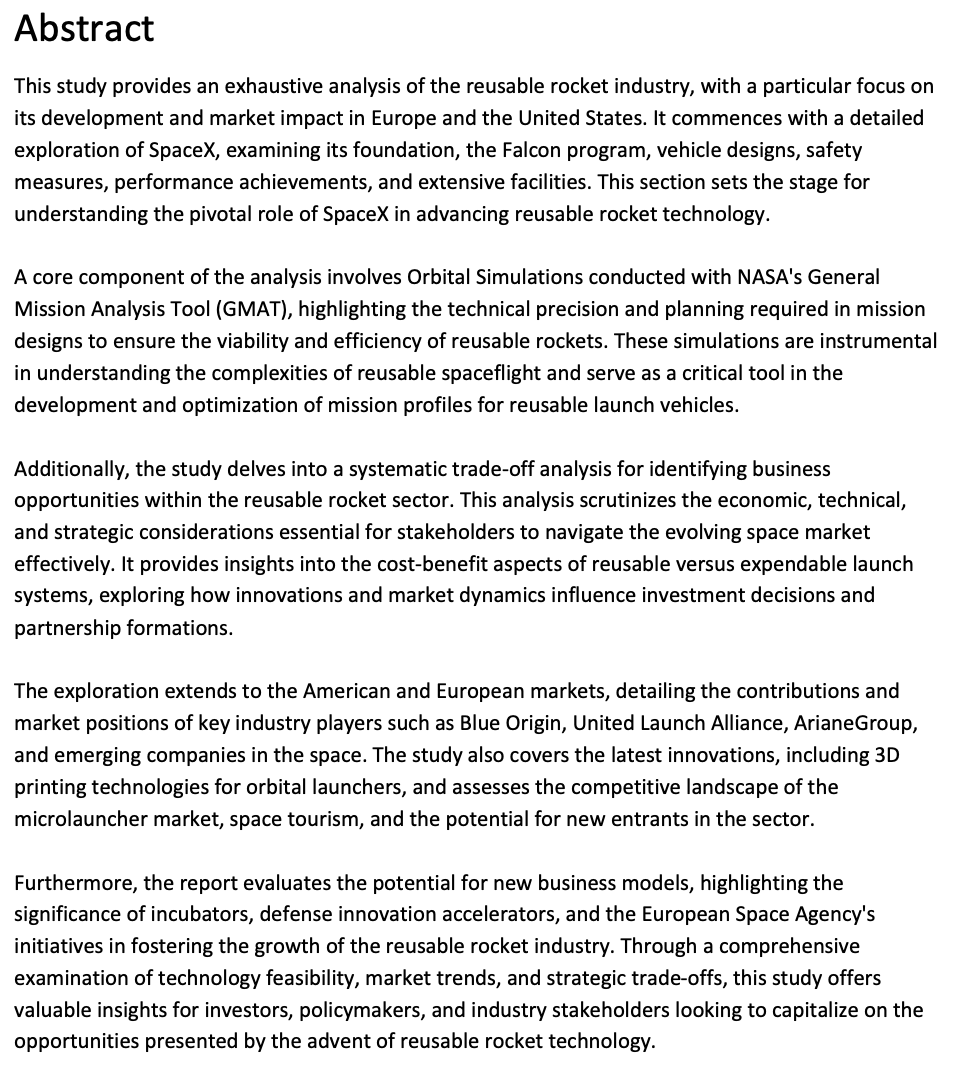


This includes examining the technological advancements, operational methodologies, market trends, and key players driving innovation in the development and deployment of reusable launch systems. The study also delves into the challenges, opportunities, and future prospects associated with reusable launch vehicles, shedding light on their impact on the global space industry and the growing demand for cost-effective, sustainable, and efficient access to space.
A core aspect of the research involves Orbital Simulations conducted with NASA's General Mission Analysis Tool (GMAT), which highlights the technical precision and mission design requirements critical to ensuring the viability and efficiency of reusable rockets. These simulations help address the complexities of reusable spaceflight, contributing to the optimization of mission profiles.
The study explores the competitive landscape of the reusable rocket sector in Europe and the United States, analyzing market positions held by major industry players like SpaceX, Blue Origin, United Launch Alliance, ArianeGroup, and emerging companies. It also evaluates the potential for new entrants, space tourism, and microlauncher markets.
The research utilizes GMAT to conduct orbital simulations, providing insight into the technical and operational constraints that reusable rocket systems must overcome to achieve cost-efficiency and reliability.
The solution involves a preliminary system design and the formulation of mission requirements, addressing both technical and economic challenges.
To identify viable business opportunities, the study employs a systematic trade-off analysis, considering economic, technical, and strategic factors. This approach ensures the alignment of design and operational strategies with market needs.
The study emphasizes business model planning supported by incubators, defense innovation accelerators, and initiatives by the European Space Agency, fostering growth in the reusable rocket industry.
The study delivers a variety of valuable outcomes, including:
Improved Efficiency: Enhanced mission planning through precise simulations.
Reduced Costs: Optimization of reusable systems over expendable alternatives.
Enhanced Capabilities: Insights into market dynamics and emerging opportunities.
These outcomes equip Space policymakers, industry players and investors, with actionable insights to capitalize on the opportunities presented by reusable rocket technology.
